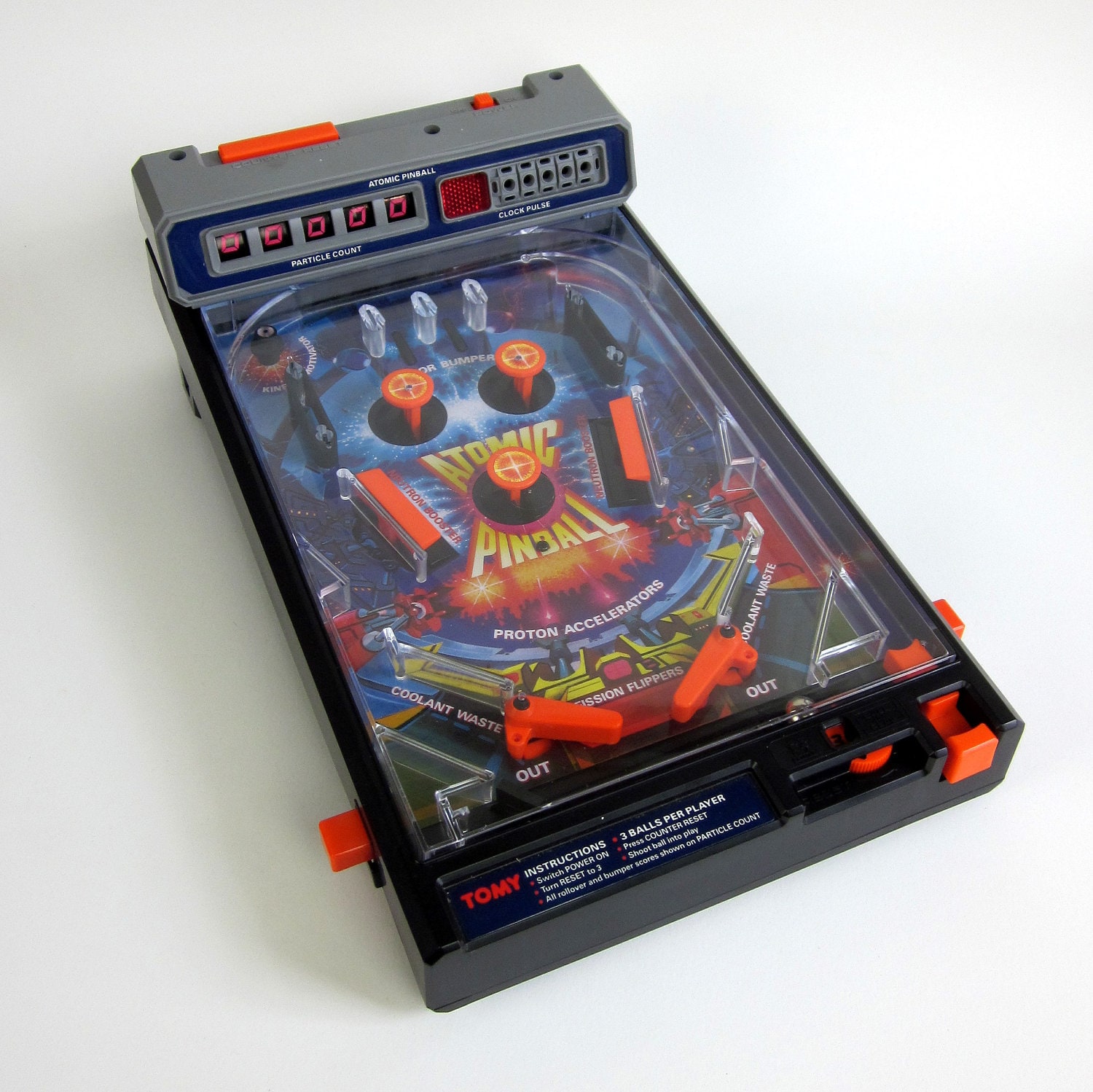


Since the original posting, I've modified the table and built some new elements for the upper portion. Dowels in the table were glued into drilled-out holes. Other parts of the table were added with hot glue. Thick craft foam provides a cusion for the knobs. The knobs were drilled out partway to fit the dowels. The forward motion of the paddles is stopped by the knobs against the outside of the table, so I had to adjust the length of the dowels accordingly prior to gluing the knobs on. This creates resistance, and springs the paddles back into place after you strike the knobs outside the table. Rubber bands are attached to the screw eyes in the backs of the paddles and to a dowel attached to the table. I used hot glue to connect all the wooden pieces and dowels and knobs. Please examine the photos to see how everything fits together.

To get accurate, precise holes in the table, I measured the distance I wanted and used a nail punch to create a starting hole for the drill bit. There are washers under the paddles to give clearance from the table.

The bolts are loose enough that the paddles pivot easily, but tight enough that they don't rock or wobble. The paddles are each mounted to the table with a 2 1/2" long, 5/16" bolt, and a locking nut. For ease, this should be done at this point rather than once the paddles are attached to the table as shown in the photo. Once I had the paddles in place, I realized that the ball would slip when struck, so I cut a large rubber band in half and used spray adhesive to attach the pieces to the paddle faces to give them some grip. I then drilled a hole and added a screw eye right in the middle of the backside of each paddle. These blocks were attached to the paddles with a hinge made from denim. I used scrap wood to create two small blocks with a hole drilled about halfway through to fit a 5/16" dowel. With the paddles still clamped together, I carefully drilled a 5/16" hole through the pivot corner of the paddles. I measured and cut two of these with a jigsaw, and then clamped them together and sanded them smooth, rounding over the sharp edges. The striking face is 3 1/2" across, and is square to the outside edge, which is 2" wide. This is a great project for parents and kids to take on together! To me that's where the real fun lies-creating various obstacles and then seeing a ball bounce around all over and through them, somewhat under your power. But once the paddle assemblies are in place, just about anyone can build ramps and jumps or anything else they can imagine for the upper part of the table. Building a solid table with a functioning paddle assembly requires some basic woodworking skills, and may be fairly difficult without proper guidance and appropriate tools. With some parental help, this can be a kid-friendly project. Just hang onto it, and eventually you'll find a new use for it down the road! A crafty person should never throw perfectly good stuff in the trash. The ball is from an old computer mouse, with the rubber coating removed (you could use a marble as well). This is a tabletop pinball machine made from all scrap wood and bits and pieces of things I've held onto just waiting for a project like this.


 0 kommentar(er)
0 kommentar(er)
